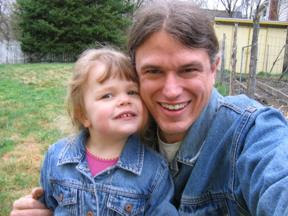So. The great question of the day is, did Snape do it? If you're not familiar with Harry Potter, skip this post. If you haven't yet read
The Half-Blood Prince, and intend to, stop reading immediately, because the following contains
MAJOR SPOILERS.
There are three principle questions I see:
- Is Dumbledore dead?
- Did Snape kill/attempt to kill him?
- What about Harry and the Dark Side?
In speculating, we must first consider the obvious theory:
Snape Killed Dumbledore.
This theory has much to commend it. All witnesses agree. There is no obvious flaw in such an interpretation. It fits with the general trend of the book, in which Harry loses all his support people, and sets up his dramatic declaration in the end that he can hide no longer behind other people. He is on his own. An old and dull insight for a western youth coming of age, but a popular one.
Also, there is the Snape-as-Death-Eater matter. I find the idea of Snape-as-Reformed-Death-Eater-distrusted-by-everyone much more compelling, but, frankly, I was uneasy all along about Snape as good-at-heart. After all, Snape is cruel. He takes pleasure in hurting people. Now, James and Sirius were also cruel, tormenting Snape. Yet one does get the impression that, as they grew up, they might have turned away from such things. Particularly because Snape, as a grown man, is cruel to children in his power, as opposed to adolescents picking on each other. Don't get me wrong, adolescent harrassment is wrong--I was the victim of much, myself. But as the victim of such, I can say with sincerity that I do not believe that those picking on me were irredeamably evil. But Snape, knowing that Hermione was self-conscious about her appearance, when she was publically humiliated by Malfoy making her front teeth grow six inches, publically said he didn't think there was much change. That, to me, seemed to be a line crossed. So if Snape is, in the end, evil, that problem is laid to rest for me.
The principle problem with this formula is it makes Dumbledore into a dimwit. In face of all evidence of his cruelty to children, of his history as a Death-Eater, of the general distrust of others, Dumbledore insists that Snape is reformed. No plausible justification for Dumbledore's conviction is given, except that he said he was sorry when he was accomplice to the murders of James and Lily Potter. Even when he hears that Snape has made an Unbreakable Vow with Death-Eaters, he remains convinced--it appears he finds it utterably unthinkable that Snape would betray him. Harry's eternal distrust of Snape is proven right, his lust for vengeance is broadened, given more targets, it is a mess.
Moreover, Dumbledore's actions on the tower are idiotic. Having brought Harry to a place where he expects to find actively hostile Death-Eaters, because he wanted Harry's help, and he himself can barely stand, when a Death-Eater arrives, Dumbledore paralyzes the invisible Harry instead of disarming or restraining his opponent, letting Malfoy disarm Dumbledore. Right. I mean if Harry were bound hand and foot and balanced on a motorized wheelchair headed for the edge of the tower, then I might stop him before I worried about the Death-Eater, but if I invited him to help, and if he were already protected by invisibility, I would protect him by incapacitating the dangerous person.
More thoughts later...









